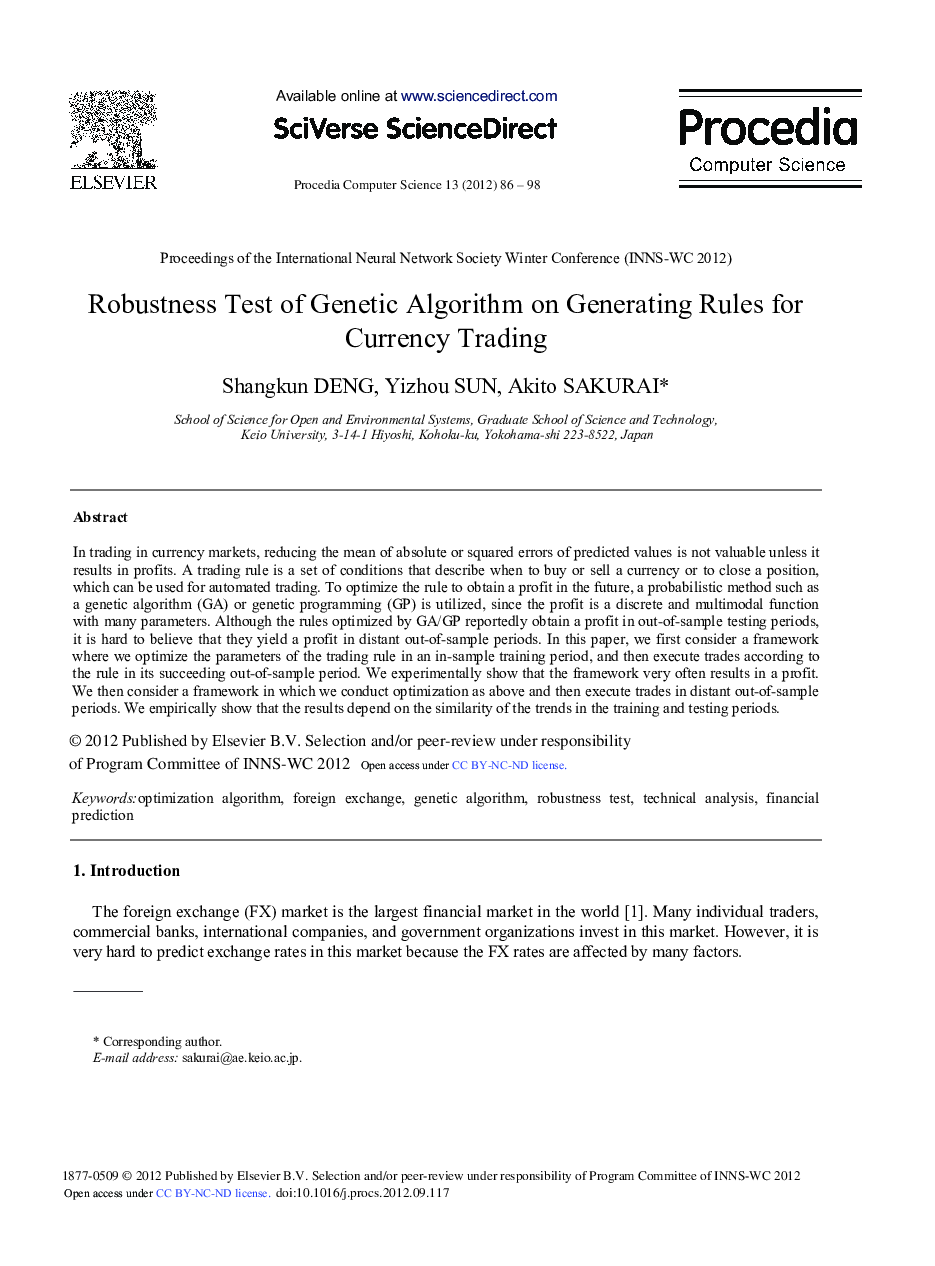| Article ID | Journal | Published Year | Pages | File Type |
|---|---|---|---|---|
| 488931 | Procedia Computer Science | 2012 | 13 Pages |
In trading in currency markets, reducing te mean of absolute or squared errors of predicted values is not valuable unless it results in profits. A trading rule is a set of conditions that describe when to buy or sell a currency or to close a position, which can be used for automated trading. To optimize the rule to obtain a profit in the future, a probabilistic method such as a genetic algorithm (GA) or genetic programming (GP) is utilized, since the profit is a discrete and multimodal function with many parameters. Although the rules optimized by GA/GP reportedly obtain a profit in out-of-sample testing periods, it is hard to believe that they yield a profit in distant out-of-sample periods. In this paper, we first consider a framework where we optimize the parameters of the trading rule in an in-sample training period, and then execute trades according to the rule in its succeeding out-of-sample period. We experimentally show that the framework very often results in a profit. We then consider a framework in which we conduct optimization as above and then execute trades in distant out-of-sample periods. We empirically show that the results depend on the similarity of the trends in the training and testing periods.
